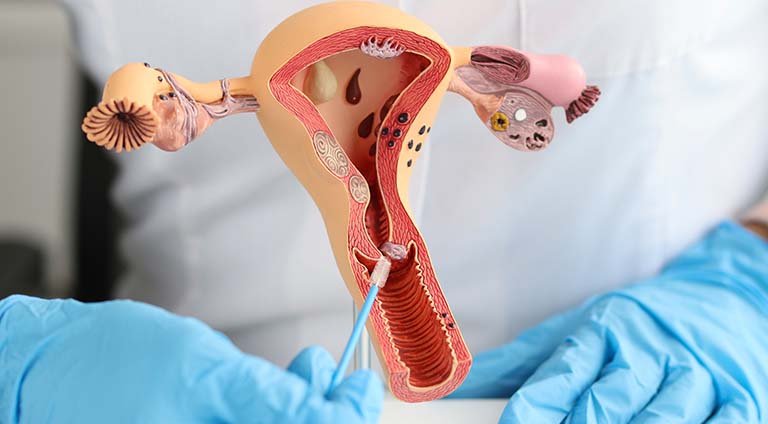Types of Hysterectomies
- Total hysterectomy removes the entire uterus and the cervix (most common type).
- Partial hysterectomy (also called supracervical hysterectomy) removes only the uterus, leaving behind the cervix (research is ongoing about the risks and benefits of leaving the cervix intact).
- Radical hysterectomy removes the uterus, cervix and upper part of the vagina (usually for cancer treatment).
Reasons for a Hysterectomy
- Abnormal bleeding
- Adenomyosis
- Dysmenorrhea (painful menses)
- Endometriosis
- Gynecologic cancers, including cancer of the uterus, ovary, cervix or endometrium
- Heavy or prolonged menstrual bleeding (menorrhagia)
- Fibroids
- Uterine prolapse, which may be combined with bladder repair
Procedure
- Vaginal hysterectomy: This method involves removing the uterus through the vagina, which does not require any external incisions and leaves no visible scarring. Majority of gynaecologists recommend vaginal hysterectomies whenever possible.
- Abdominal hysterectomy: A surgeon removes the uterus through a small incision below the bellybutton. This type of hysterectomy has a longer recovery period trusted Source than a vaginal hysterectomy.
- Laparoscopic-assisted hysterectomy: A surgeon inserts an instrument called a laparoscope (a long, thin tube with a light and high resolution camera on the end) through a small incision in the bellybutton. Once they locate the uterus with the laparoscope, they will cut it into small pieces, which they will remove through two or three additional incisions in the abdomen.
How painful is hysterectomy?
A hysterectomy is typically not painful during surgery because of anesthesia. People may feel drowsy after surgery while the anesthesia wears off and can expect some discomfort and soreness after the procedure, especially at the incision site. The level of pain can vary from person to person and depend on the size of the incision. Recovery after vaginal hysterectomy is shorter and less painful than it is after an abdominal hysterectomy. In laparoscopic hysterectomy the pain may last for a day or two.
A full recovery might take three to four weeks. A healthcare professional will provide pain relievers and monitor a person’s vital signs. During the first few weeks after surgery, people may experience cramps, leg pain, frequent urge to pass urine, painful intercourse, constipation, vaginal bleeding or spotting and mild pain in the lower abdomen.




